The Shelbourne Reynolds Stripper Header is a unique and innovative product. From the time the Shelbourne stripper header was developed in 1987, Shelbourne has been devoted to improving its stripper headers to make them more efficient and appealing to a wider range of customers and crops around the world. The re-sale value of Shelbourne’s stripper headers is excellent and people are constantly coming up with new uses for the headers.
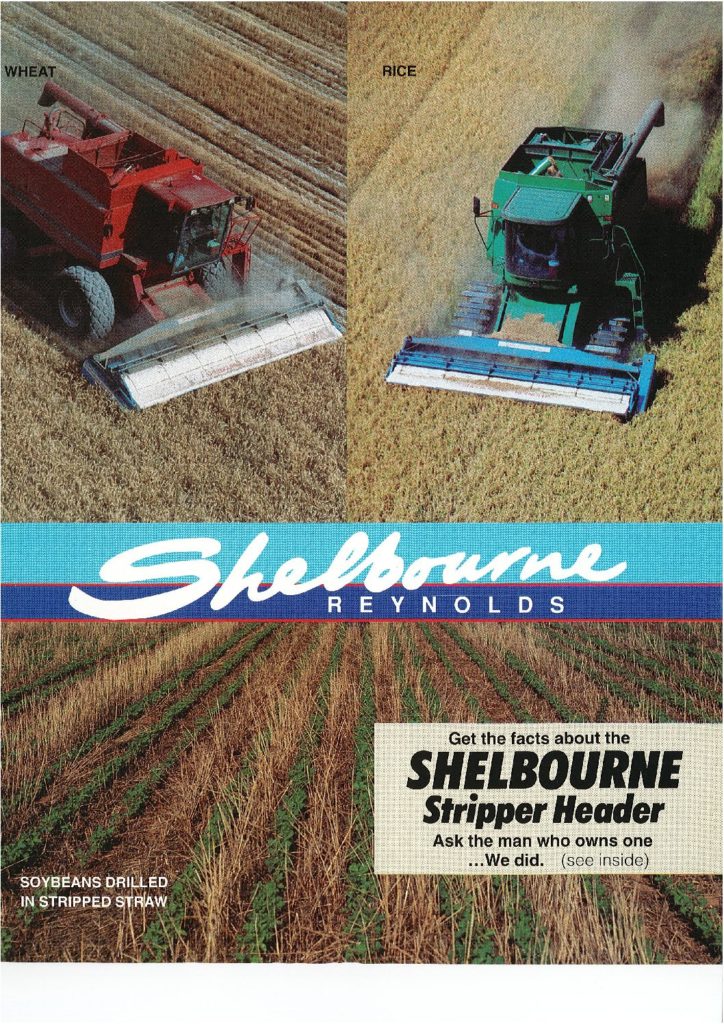
The 18 foot SR5400 and 20 foot SR6000 were by far the most popular models built. The machine was designed for use in both wheat and rice. The cross sectional diagram below shows that the rotor feeds the crop back onto draper belts which then feed the material back to an uncovered auger.
The SR was a very successful model and most of the original machines are still in the field today. A strong demand for a wider machine as well as customer concerns over the durability of the draper belts (mostly due to rodent damage incurred over the winter) meant that the SR range was discontinued in 1994.
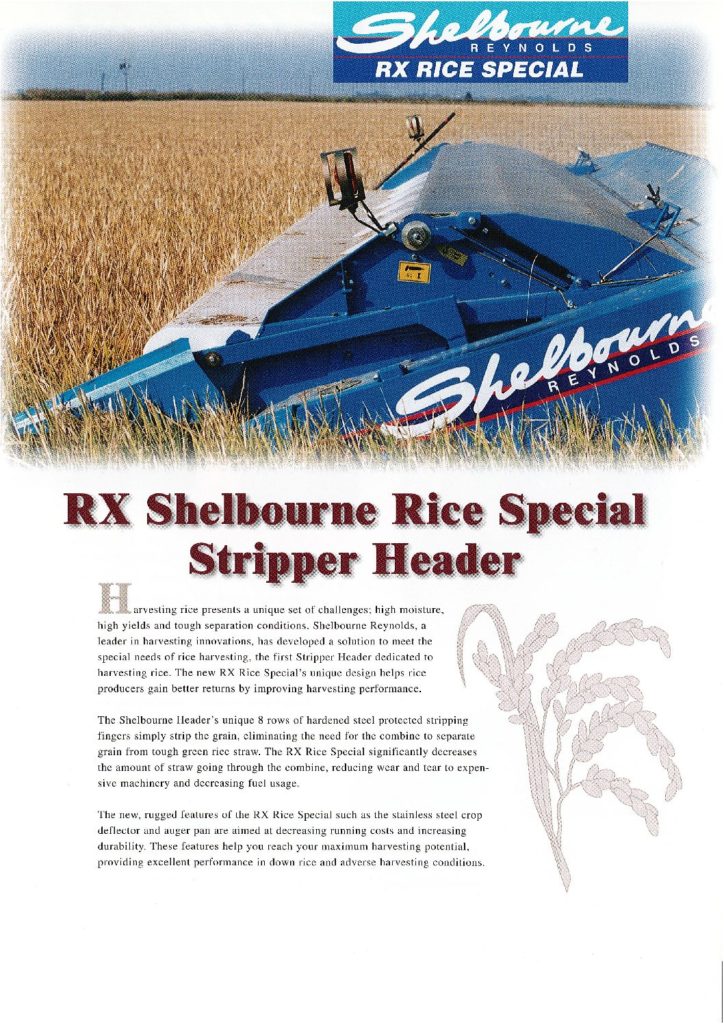
The RX was introduced as a dedicated rice header. A steel shaker pan replaced the conveyor belts as a means of transferring the wet heavy rice material from the stripping rotor to the auger. This design proved very successful and durable. 1999 Rice Special models featured many stainless and hardened steel components to extend their life expectancy and reduce the long term operating costs of the header. Stainless steel stripping fingers were fitted in 2000, these doubled the finger life expectancy as well as providing advantages in stripping performance.
The RX was produced until 2001 by which time it had gained a reputation as the header of choice if you were serious about harvesting rice.
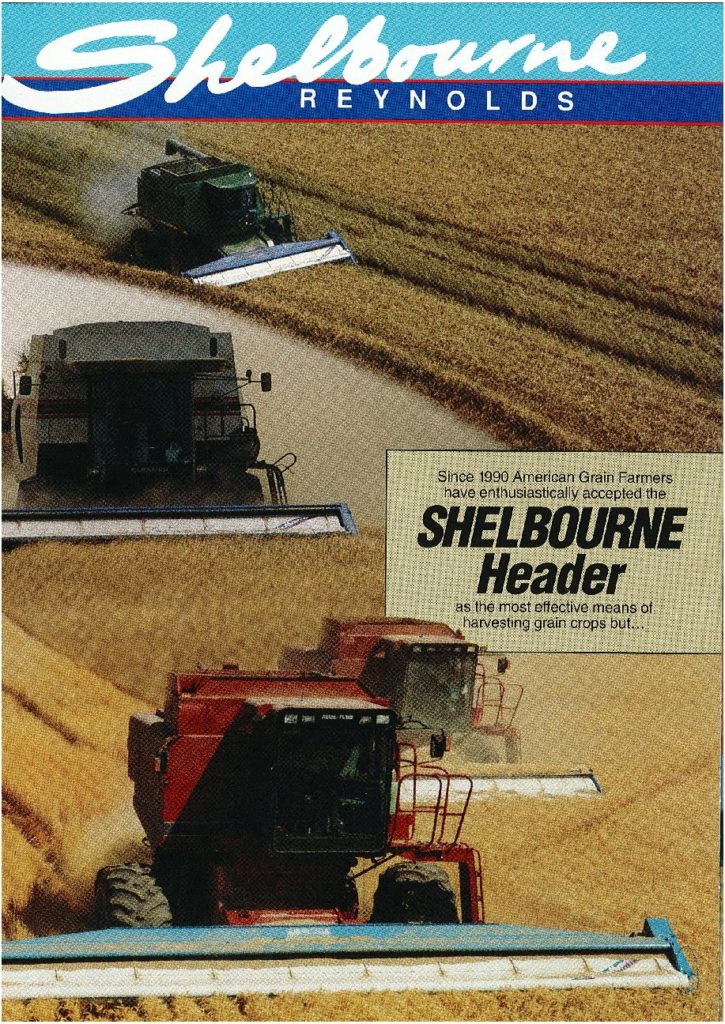
The CX range was released in 1995 and was Shelbourne Reynolds’ first machine aimed at the US prairie wheat farmer. The CX84 (28 foot wide) machine was by far the most popular. The design was shortened from the SR and the rotor placed closer to the auger trough. Crop was moved directly from the rotor to the auger. This design worked very well in dry standing crop conditions although it had limitations when things became lodged damp or tough. These machines had the same gearbox drive as the SR range. Stainless steel “Seed Saver” stripping fingers were introduced in 1999 and were a major breakthrough in stripping tougher threshing wheat and durum varieties. When fitted with the cups orientated upwards the seed saver fingers enabled previously un-strippable varieties to be stripped with decreased loss.
The seed saver fingers can be fitted to any of the CX and RX models.
The CX range was updated and improved annually until pressure for a variable speed rotor drive, still wider widths and better performance in tough conditions brought its production run to an end in 2000.
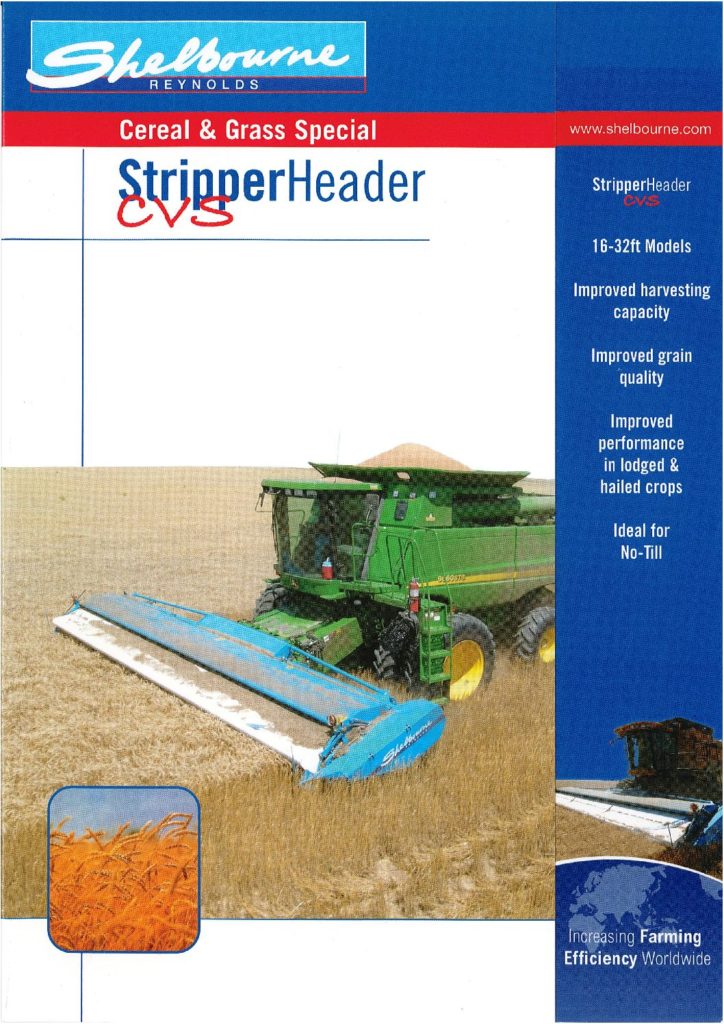
In 2000, after many years of testing and product development, it was decided that both rice and cereals could be harvested with the same frame design with just relatively small design differences between ranges. The auger and rotor are placed closer together and grain is moved directly from the rotor to the auger. The deeper flighted larger diameter auger is able to handle more straw than before, this coupled with a larger shear bolt gives both these machines a significant advantage when harvesting lodged crops. A new variable speed drive system was developed which enables the operator to make rotor speed adjustments from the cab.
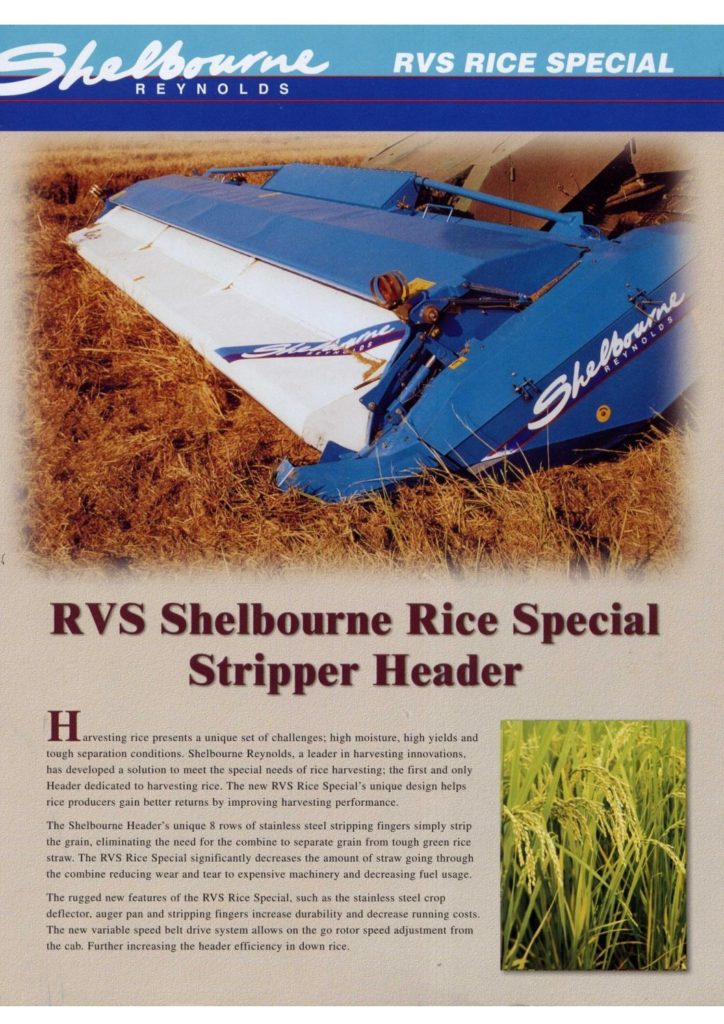
Extensive field testing proved that a deeper flighted auger sitting in a trough will feed better than a smaller one sitting on a flat pan. It is with this theory in mind the RX shaker pan machine was discontinued in favor of the direct feeding RVS header, this allowed the use of a common main frame with the CVS.
The Variable speed drive system was also introduced from the CVS model which allowed the operator to make rotor speed adjustments from the cab.
The RVS range features more stainless steel than on previous rice special models. The crop deflector, top hood and floor are stainless and the auger flighting and retractable auger fingers are made from hardened steel.
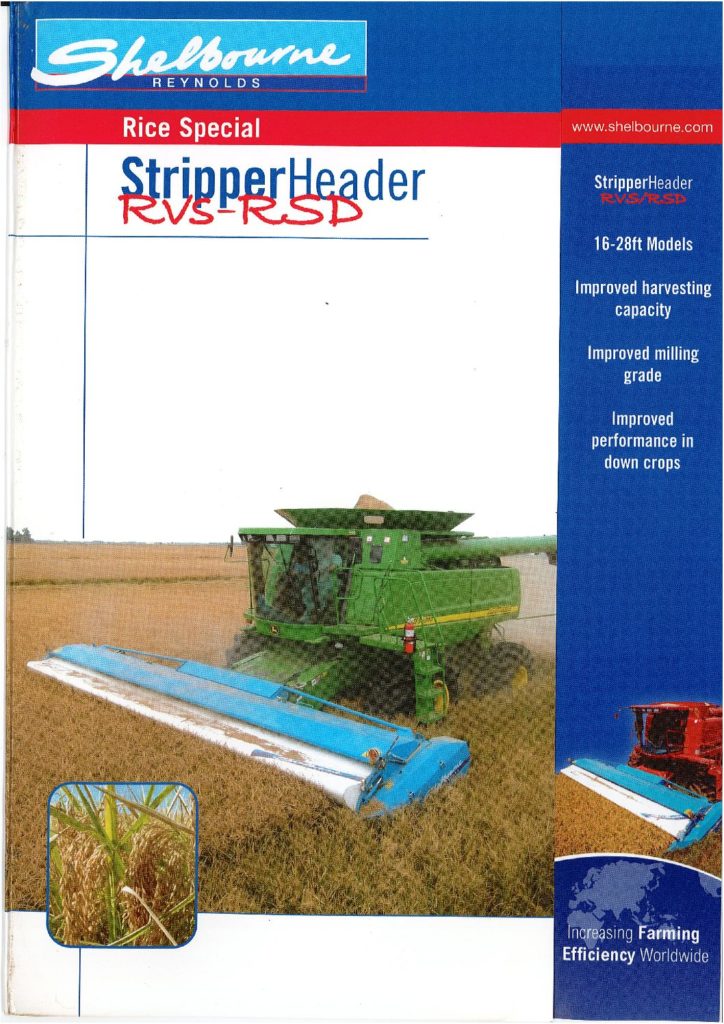
The RSD was developed using the existing RVS main frame incorporating a new drive system.
The fixed belt drive system offers a high level of consistent power to the rotor with minimal maintenance. It is therefore best suited to the tough harvesting conditions found in rice & grass seed where minimal adjustments of rotor speed are required.
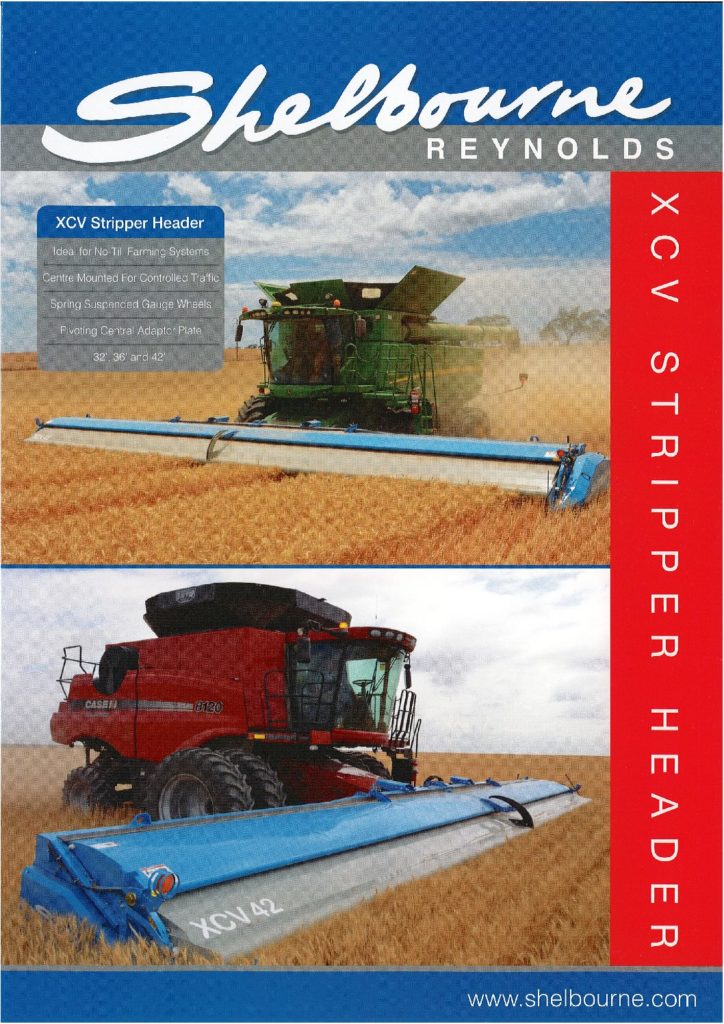
Larger capacity combines and larger scale farming prompted the development of the XCV range. The initial model was the XCV 42, this was then followed in 2014 with the XCV32 and XCV36.
The new machine incorporates 3 stripping rotors with two equally spaced division plates. A two piece auger is used with a central joint.
New features include a spring loaded pivoting adaptor plate and gauge wheels. All XCV machines are centre mounted on the combine feeder house.
